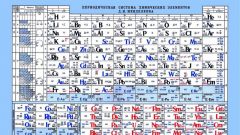Instruction
1
First and foremost, you should remember a few simple rules. If we are talking about the metal, its equivalent mass is calculated by the formula: Me=M/V, where M is the atomic mass of the metal, and In his valence. Consider this rule with specific examples.
2
Calcium (CA). Its atomic weight 40,08. Rounded take it over 40. Valency equal to 2. Consequently, DOE(Sa) = 40/2 = 20 g/mol. Aluminium (Al). Its atomic weight 26,98. (Rounded 27). Valence equal to 3. Thus, Mae(Al) = 27/3 = 9 g/mol.
3
These methods are applicable if we are talking about pure metalX. But if they are part of a connection, for example, the same oxides? Here we must remember another rule: equivalent mass of the oxide is calculated by the formula: Me + Mo, where Mo is the equivalent mass of oxygen. It is, accordingly, calculated according to the formula already considered, that is, 16/2 = 8.
4
Suppose you have a primary aluminium oxide, Al2O3. How to calculate equivalent weight? Very simple: 27/3 + 16/2 = 17 g/mol.
5
Is there another way to determine the equivalent mass of the metal and its oxide? Yes, and very effective. It is based on the so-called law of equivalents, according to which all substances react with each other in equivalent quantities. For example: metal weight 33.4 grams entered into reaction of oxidation with oxygen. The result is an oxide with a total mass of 43 grams. You want to determine the equivalent mass of the metal and its oxide.
6
First, calculate how much oxygen combines with the metal in the course of this reaction: 43 – 33,4 = 9.6 grams. According to the law of equivalents, this mass is as much larger than the equivalent mass of oxygen (which, recall, is equal to 8), many times the equivalent mass of the metal is less than its original amount. That is 33,4/DOE(IU) = 9,6/8. Consequently, Me(me) = 33,4*8/9,6 = 27,833 g/mol, or about 27.8 g/mol. This is the equivalent mass of the metal.
7
Equivalent weight of oxide find the following: 27,8 + 8 = 35,8 g/mol.


